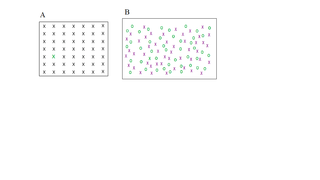Executive Function
The Effect of Temperature on Cognitive Function
How a hot summer day can affect brain function.
Posted March 31, 2022 Reviewed by Vanessa Lancaster
Key points
- Ambient temperature can and does affect cognitive and perceptual brain function.
- Researchers found executive function and perception were affected by exposure to heat.
- The study showed that response times were slower after the high heat exposure for both simple and complex Stroop tests.
- Finally, the researchers reported that accuracy showed a speed/accuracy tradeoff on the perceptual task.
Spring has finally arrived, and with it, warmer temperatures. Many people say that their thinking slows down as the temperature rises in a summer heatwave, but is this really true? According to a recent study, the answer is yes. Exposure to heat has been shown to alter both perception as well as our cognitive executive functioning.
The Tasks

Perception was measured via the Visual Search Task (VST), which asked the men to respond as quickly as possible to a visual signal which appeared on the computer screen in front of them.
In the simple version of the task, the triangle was a bold, solidly outlined green triangle. In the complex version of the task, the triangle was a triangle made of dots presented against a background of flickering dots. The VST task is designed to measure the ability to filter out distracting information and interpret a very specific signal.

Executive function was assessed using the Stroop task, which measures the ability to suppress an automatic response.
In the Stroop task, the automatic response is reading a word presented on the screen, something we do automatically once we’ve learned to read.
In the simple Stroop task, a word is presented on the screen in white font, and participants match it as quickly as possible. In the complex version of this task, participants were asked to indicate the color of the font used to present the word rather than the word itself.
Some words were congruent (the word and the font color matched – the word red written in red ink), and in others, the words were incongruent (the word red written in green ink). Reaction time was recorded along with the number of correct responses.
Memory was measured using the Corsi Blocks Test, where a 3 x 3 grid of squares was presented, and sequences of squares were illuminated. Participants were asked to replicate the order in which the square lit up, with the sequences of lighted squares increasing in length on each trial from three to nine. The three longest sequences correctly remembered were recorded.
And finally, attention was measured using the Rapid Visual Information Processing Test (RVIP). In this test, sequences of three numbers, between the values of two and nine, were randomly presented. Participants were asked to indicate as quickly as possible if those three numbers were either all odd or all even numbers.
Again, reaction time and accuracy were measured. The participants also reported their mood as well as their subjective feelings about the heat and the tasks they were asked to perform. Measurement of several physiological responses was also recorded (body temperature, heart rate, skin temperature, etc.)
When the participants reported for this study, they were assigned to either the high heat or moderate heat condition. Measurements were taken before exposure to their assigned condition (baseline). Then the participants in the high heat condition spent one hour sitting in a quiet room with the temperature set at 39.6 degrees Celsius (103.28 degrees Fahrenheit) or at 21.2 degrees Celsius (70.16 degrees Fahrenheit) for the moderate heat condition.
Cognitive and executive function was again measured after both groups' hour-long exposure to heat. All the participants were then asked to return a week later, and the exposure conditions were switched, and the study was repeated (this is known as a randomized crossover design).
Results
Both executive function and perception were affected by exposure to heat. Response times were slower after the high heat exposure for both simple and complex Stroop tests and the simple VST task. Interestingly, accuracy for both the simple and the complex portions of the VST improved after exposure to heat, even though reaction times were slower.
The researchers speculated that this might be an example of what is known as the Speed/Accuracy tradeoff. The participants may have sacrificed speed for accuracy on this task after being in the very hot room. The improvement in accuracy was not seen after exposure to moderate heat.
In fact, in the complex version of this task, accuracy actually decreased after moderate heat exposure. No differences in performance on the two memory tasks after exposure to heat were seen. The mood measures showed that confusion, depression, and fatigue were all greater after exposure to high heat compared to the moderate heat condition.
So it seems that the higher temperature of the coming summer might have an effect of our frontal-lobe-driven executive function and our perceptual skills.
References
Malcolm, R.A., Cooper, S., Folland, J.P., Tyler, C.J., and Sunderland, C. (2018). Passive heat exposure alters perception and executive function. Frontiers in Physiology, 9, Article 585. doi: 10.3389/fphys.2018.00585.




